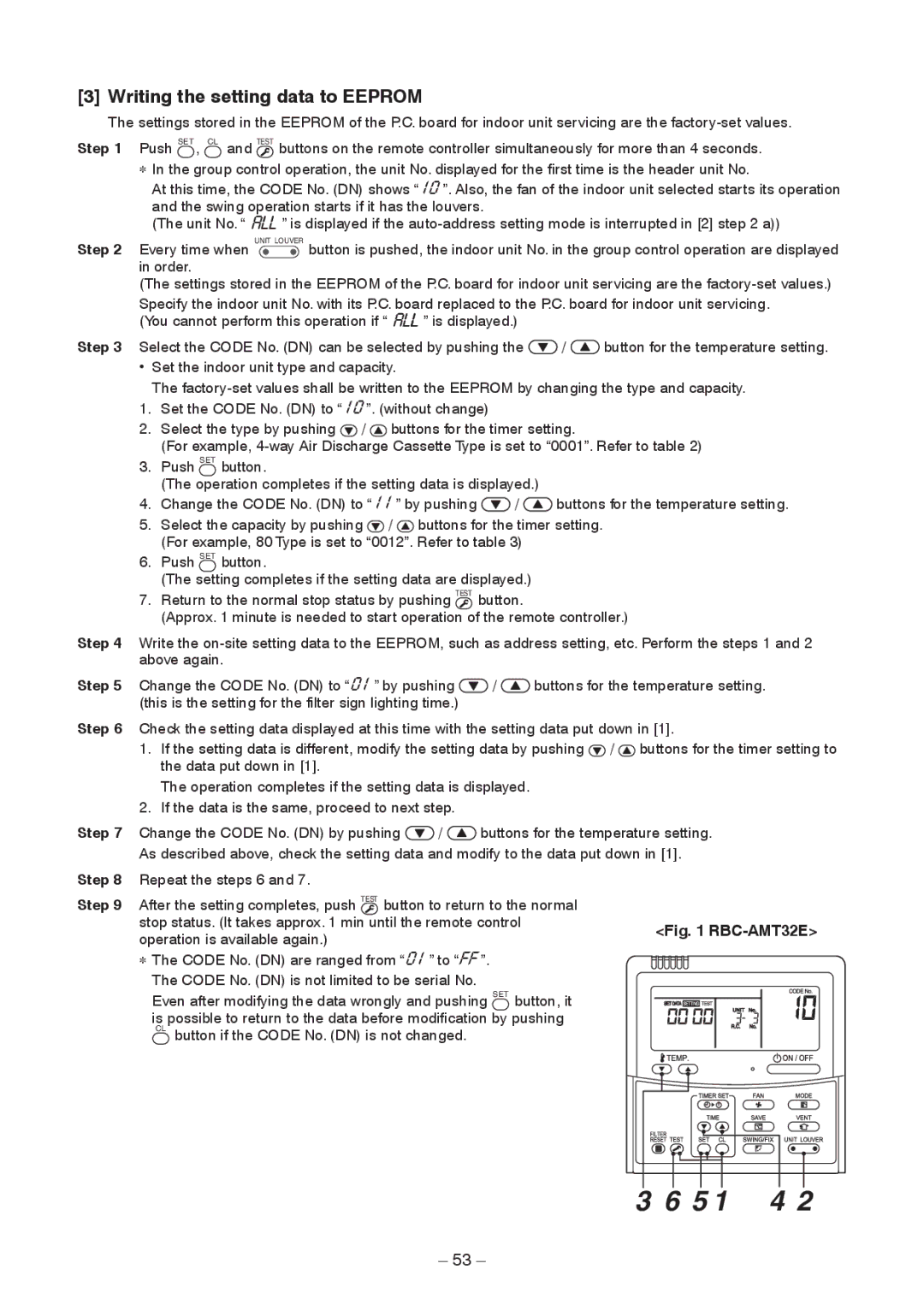RAV-SM2802DT-TR, RAV-SM2242DT-TR, RAV-SM2802DT-E specifications
Toshiba has long been a leader in heating, ventilation, and air conditioning (HVAC) technology, offering innovative solutions that cater to both residential and commercial needs. Among their impressive lineup, the Toshiba RAV-SM2802DT-E and RAV-SM2242DT-E stand out as exceptional models designed for efficiency, performance, and comfort.The RAV-SM2802DT-E is a powerful unit ideal for larger spaces, boasting a cooling capacity of 28,000 BTU/h and a heating capacity of 31,000 BTU/h. This model features a highly efficient inverter compressor, which adjusts the power consumption based on the cooling or heating demand, ensuring optimal energy use. This inverter technology not only reduces energy consumption but also maintains a stable indoor temperature for enhanced comfort.
On the other hand, the RAV-SM2242DT-E is tailored for mid-sized applications with a cooling capacity of 22,000 BTU/h and a heating capacity of 25,000 BTU/h. This model also embraces inverter technology, promoting lower operational costs while delivering reliable performance. Both units come with a high energy efficiency rating, reducing environmental impact and saving on utility bills.
One of the key characteristics of these Toshiba models is their advanced filtration system. Equipped with a high-performance filtration mechanism, they can effectively reduce dust, allergens, and other pollutants, ensuring a healthier indoor environment. The units also operate quietly, contributing to a peaceful atmosphere, whether in a home, office, or commercial space.
Both the RAV-SM2802DT-E and RAV-SM2242DT-E are designed with user convenience in mind. They come with a user-friendly remote control, allowing for easy adjustments and settings from anywhere in the room. Compatibility with smart home systems further enhances user experience by enabling remote monitoring and control through smartphones or tablets.
Constructed with durability in mind, these units are built to withstand diverse weather conditions, making them suitable for various climatic environments. Additionally, their aesthetic design allows for seamless integration into any setting, ensuring that performance does not compromise on looks.
In summary, Toshiba's RAV-SM2802DT-E and RAV-SM2242DT-E offer a blend of superior technology, energy efficiency, and user-friendly features. With their inverter technology, advanced filtration systems, and durable designs, these models represent Toshiba's commitment to quality and innovation in the HVAC industry. Whether for residential or commercial applications, these units guarantee comfort and reliability all year round.

